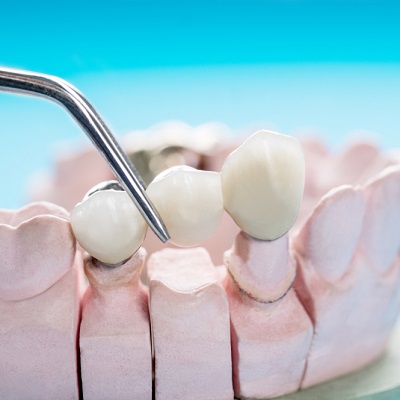Dental crowns are a common and effective solution for restoring damaged or weakened teeth. Whether you need a crown due to decay, a cracked tooth, or after a root canal, understanding what to expect during the treatment process can help ease any anxiety and prepare you for a successful outcome. Here's a comprehensive guide to what you can expect during a dental crown treatment in Islamabad.
1. Initial Consultation and Examination:
The first step in the dental crown process is a consultation with your dentist. During this visit, your dentist will conduct a thorough examination of your mouth, focusing on the tooth that needs the crown. X-rays may be taken to assess the extent of damage or decay and to determine if any additional treatments, such as a root canal, are necessary before placing the crown. Your dentist will also discuss your options for crown materials, which can include porcelain, metal, resin, or ceramic, each with its own advantages depending on the location of the tooth and your aesthetic preferences.
2. Tooth Preparation:
Once the decision to proceed with a crown has been made, the next step is preparing the tooth. This involves reshaping the tooth to make room for the crown. If the tooth is severely damaged or decayed, your dentist may first need to build it up with filling material to provide a strong foundation for the crown. The goal is to remove any damaged or decayed parts of the tooth while preserving as much of the healthy structure as possible.
3. Taking Impressions:
After the tooth has been prepared, your dentist will take an impression of the tooth and the surrounding teeth. This impression is crucial for creating a crown that fits perfectly with your bite and aligns with the neighboring teeth. Traditionally, this step involves using a putty-like material to create a mold of your teeth. However, some modern dental practices use digital scanners to take a precise, 3D image of your tooth. The impression or digital scan is then sent to a dental lab where the custom crown is fabricated.
4. Temporary Crown Placement:
While you wait for your permanent crown to be made, your dentist will place a temporary crown over the prepared tooth. This temporary crown will protect the tooth, prevent sensitivity, and maintain the appearance of your smile. It's important to treat the temporary crown with care, avoiding sticky or hard foods that could dislodge it, and maintaining good oral hygiene to prevent infection.
5. Permanent Crown Placement:
Once your permanent crown is ready, typically within two to three weeks, you'll return to the dentist for the final step. Your dentist will remove the temporary crown and check the fit and color of the new crown. If everything looks and feels right, the crown will be cemented into place using a strong dental adhesive. The dentist will ensure that the crown is properly aligned with your bite and make any necessary adjustments.
6. Post-Treatment Care:
After the crown is placed, it's normal to experience some sensitivity or discomfort for a few days. Over-the-counter pain relievers can help manage this. Your dentist may advise you to avoid certain foods initially and to continue practicing good oral hygiene. With proper care, your dental crown can last anywhere from 5 to 15 years or more.
Conclusion:
Getting a dental crown is a straightforward procedure that can significantly improve the function and appearance of a damaged tooth. By understanding each step of the process, from the initial consultation to post-treatment care, you can approach your dental crown treatment with confidence and ease. Remember, maintaining regular dental check-ups and good oral hygiene will help ensure the longevity and success of your crown.
For more information visit Enfield royal clinic in Islamabad.





Comments